These missing kids need your help. Here's what to know.
Thursday marks the 40th annual National Missing Children's Day in the United States. The day is meant to draw attention to child safety and recognize people who strive to reunite missing children with their parents. It was established by President Ronald Regan in 1983 and coincides with International Missing Children's Day, first commemorated in 2001.
May 25 was chosen in honor of Etan Patz, who was 6 when he was abducted while walking to his school bus stop on that date in 1979. Pedro Hernandez, a clerk at a neighborhood bodega, was convicted of murder and kidnapping in connection with the case nearly four decades later, in 2017.
More: What happens when a child disappears in America?
For the past year, the USA TODAY Network has been reporting on disparities in missing children's cases. Here are some of the cases we've covered:
Alexis Patterson
Alexis was 7 when she vanished somewhere in the 242 steps between her Milwaukee home and school on May 3, 2002.
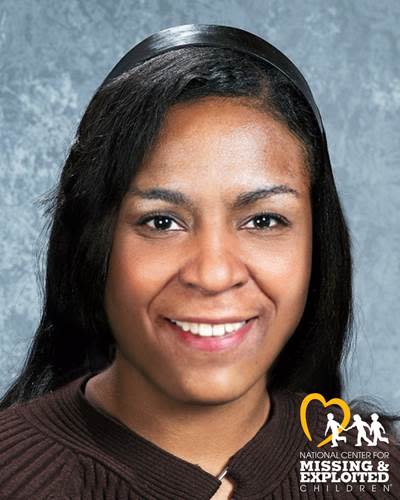
The story of Alexis’ disappearance started with a massive search for the little girl and sympathy for her family, but that quickly changed as her parents became suspects. The years have brought conspiracy theories, false leads and cases of mistaken identity. Still, her mom has never given up hope that Alexis will come home someday.
Listen: Unsolved 4: A missing girl, a search for truth
Her story is the focus of Season 4 of our podcast, Unsolved.
Domonique Holley-Grisham
On Feb. 12, 2009, Domonique, who lived in Rochester, New York, made bacon, eggs and pancakes for breakfast, then left for a floor hockey tournament. When he got back, he and his younger brother, Antonio, played a video game. Antonio doesn’t recall exactly what they argued about, but he says Domonique broke the game. A short time later, Domonique, 16, got a phone call and walked out of the house.
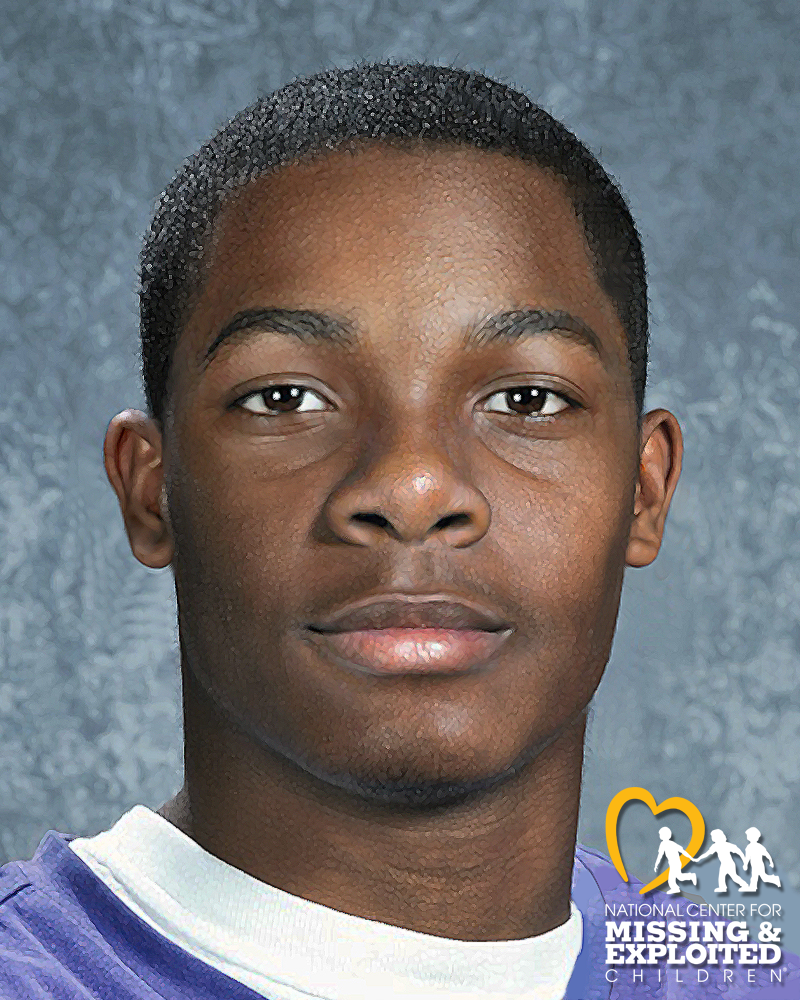
Antonio hasn’t seen his brother since. Neither has anyone else in the family.
King Walker
Toddler King Walker disappeared with his aunt 21-year-old Diamond Bynum in 2015 after taking a nap with family at their home in Gary, Indiana. When other family members awoke, they found the door open and King and Diamond gone. La
King's grandmother, Shann Walker, said her daughter, Diamond, has mental disabilities and is not capable of caring for herself or King. Because Diamond was over 18 and King’s relative, Walker said law enforcement officials told her they could not issue an Amber Alert.
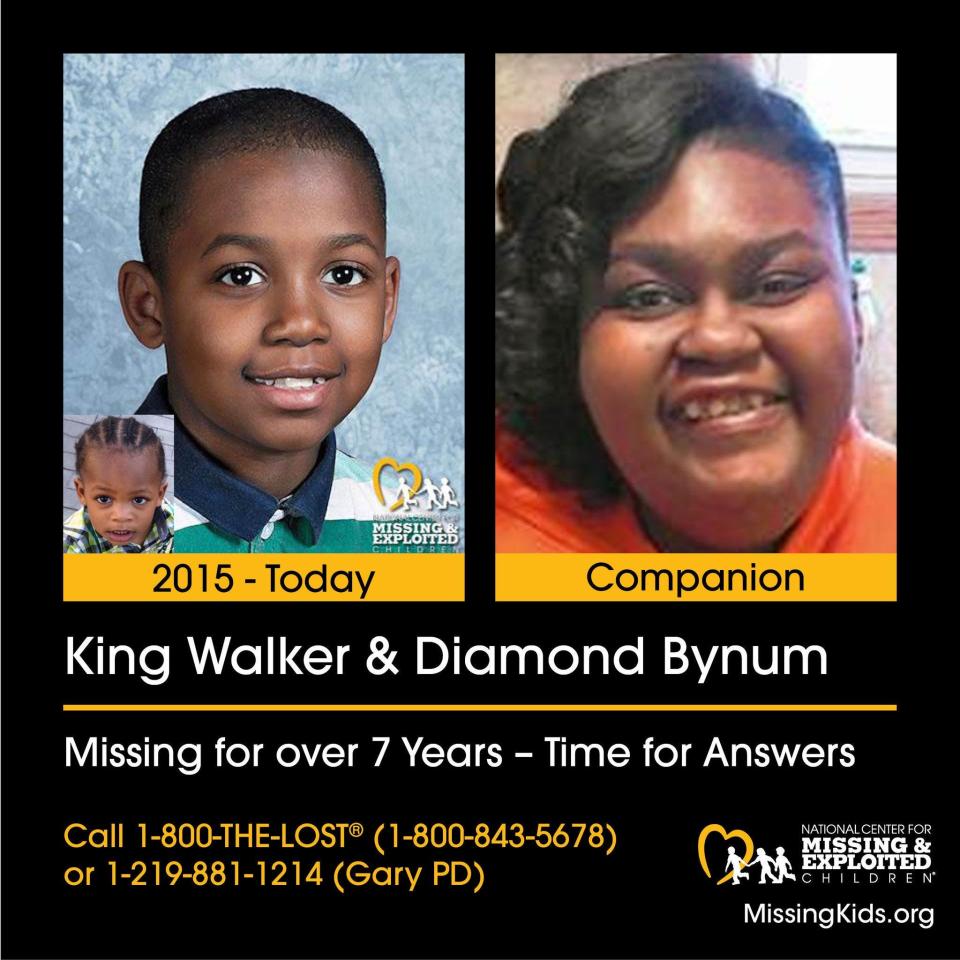
Walker said she felt like her family and volunteers initially had to lead the search. They drove around neighborhoods, asked strangers if they had seen the two and even searched abandoned homes after receiving tips they had been spotted there.
A girl who Diamond went to school with started a Facebook page to help find them. Walker also dedicated a Facebook page to the case and contacted the National Center for Missing & Exploited Children, which shared multiple posts about King and Diamond.
“I’ve been trying to find other outlets to get it nationwide,” Walker said. “I don't know how other than social media to get it to people that are in other states.”
Raymond Green
Donna Green held her infant son for only five days before he was kidnapped from her Atlanta home by a woman who had befriended the teen mom at the hospital in November 1978. More than four decades later, Green still remembers the tightness of his grip around her finger. She dreams that one day she’ll see those beautiful hazel brown eyes again.
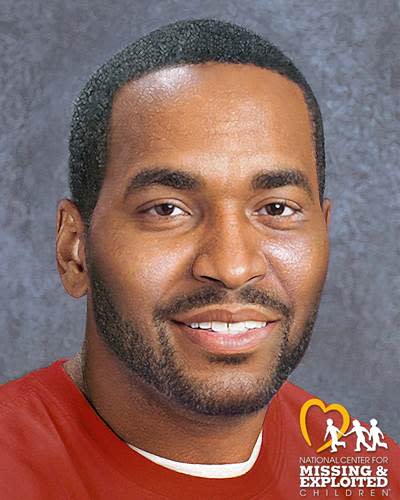
For years, there were no leads. It wasn’t until 2014 – more than 35 years after baby Raymond disappeared – that the National Center for Missing and Exploited Children suggested Green provide her DNA for analysis. Among the millions of samples in growing private and law enforcement databases, she hopes to find a match for her son – or even a grandchild who could lead her to Raymond.
Joniah Walker
The day she disappeared, Joniah Walker had plans to get her work permit.
Instead, the 15-year-old girl was spotted walking out of her Milwaukee home on the afternoon of June 23, 2002, carrying a large backpack.
Her family has not seen her since.
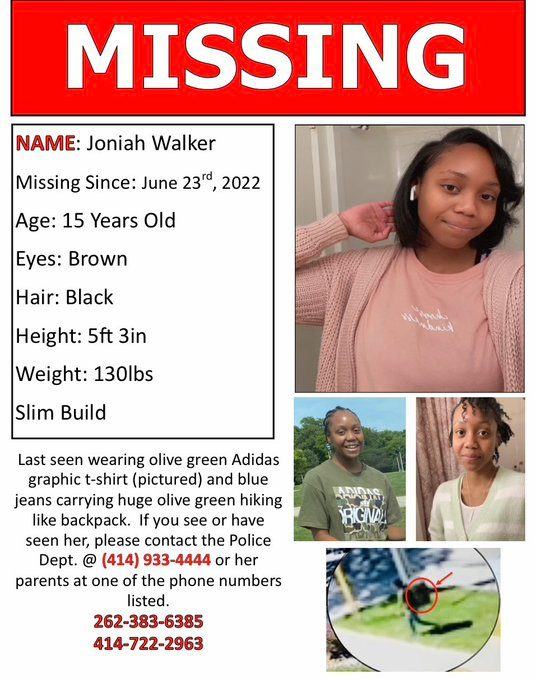
Joniah’s mother, Tanesha Howard, immediately reported her missing. But the Milwaukee Police Department told her Joniah did not qualify as a “critical missing” and did not alert local media.
Howard figured the more people who saw her daughter’s picture, the faster she would come back home. Frustrated with police, she started her own campaign and turned to the National Center for Missing & Exploited Children for help.
The center produced a video with a message from Howard to her daughter, released new posters and distributed an “urgent alert” about Joniah's case on its social media platforms and to news organizations. The center also assigned a case manager to Howard, who has connected her to a volunteer support specialist — another mother who has gone through something similar.
“I just wish there was a better system in place,” Howard said. “I was trying to explain to the police, if a parent comes in there and tells you that their kid is missing and it’s not like them, just take the time and listen.”
Diamond and Tionda Bradley
Tionda and Diamond Bradley, 3 and 10 at the time, went missing from their third-floor apartment on July 6, 2001, leaving behind just one clue: a strange hand-written note family says was uncharacteristic of Tionda. The girls' disappearance spurred one of the largest manhunts in the Chicago's history, and investigators have gone as far as Morocco to look for them.
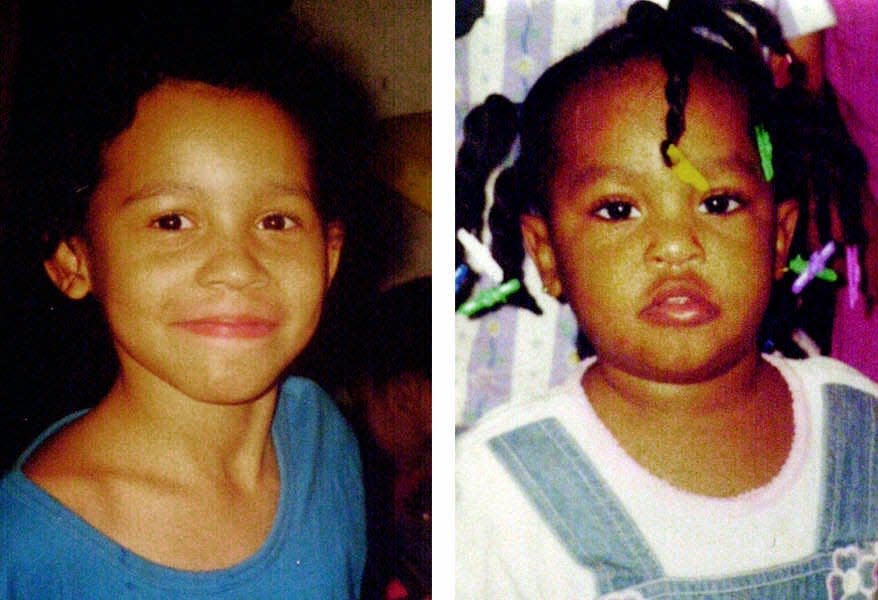
More than 20 years later, the family still has hope someone will come forward with information.
Bethany Markowski
Bethany Markowski spent a weekend in 2001 with her father after her parents divorced. The two went to a mall in Jackson, Tennessee. When it was time to leave, Bethany’s father couldn’t find the 11-year-old.
Her mother, Jonnie Carter, used social media, starting with a MySpace page the year her daughter disappeared. She now uses Facebook to share information about her daughter's disappearance.
“I don’t think there’s anything that I have not done to find Bethany,” she said.
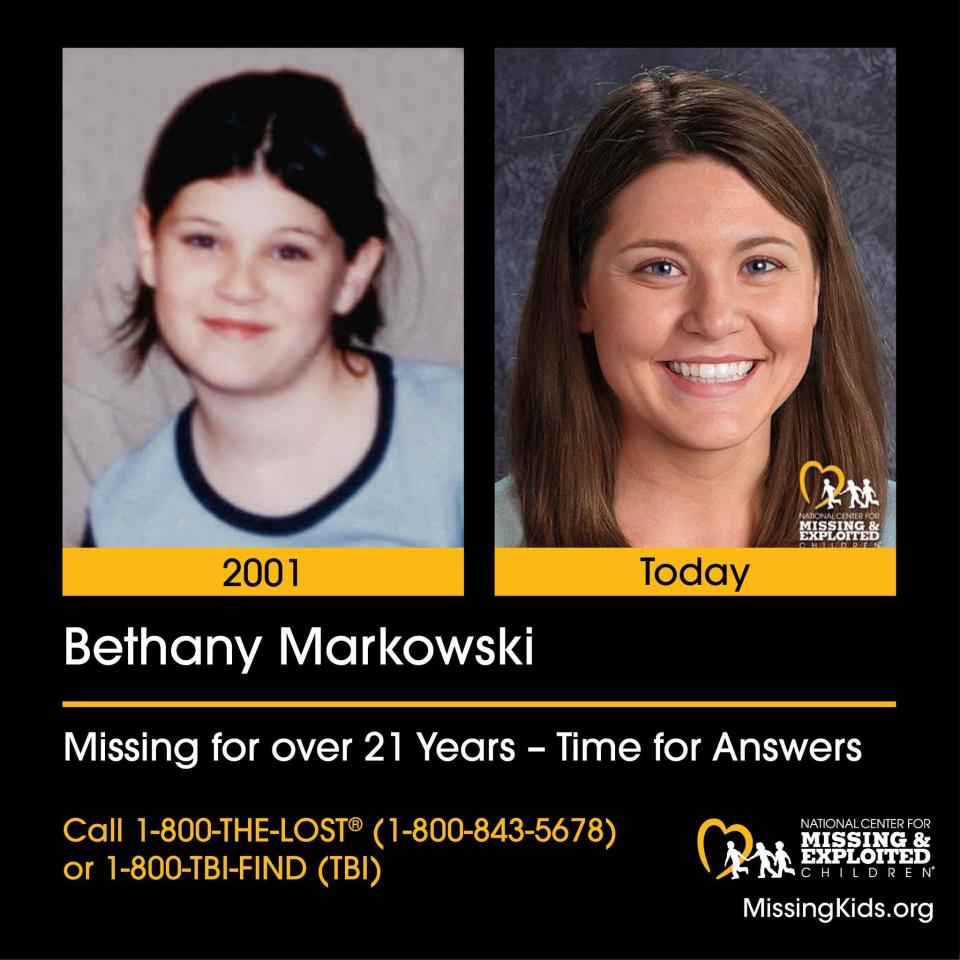
Carter, who has volunteered with the National Center for Missing & Exploited Children for more than a decade, said it is challenging to repeatedly share the same information about her daughter with no recent leads on the case.
She spends her time helping other families with missing children by holding fingerprinting events, making bookmarks for every missing child in Tennessee and speaking with parents of missing children.
Carter releases balloons every year on Bethany’s birthday. Each balloon contains information about her daughter and other missing children in the area. She has received emails from people who found the balloons more than 900 miles away.
“It reached people I could have never reached before and it got them interested in Bethany’s case,” she said, “And not only that, it got them interested in other cases in their area.”
If you have information on these or other missing children, call the National Center for Missing and Exploited Children at 1-800-843-5678. (1-800-THE LOST). To report child sexual exploitation, go to https://report.cybertip.org/.
This article originally appeared on USA TODAY: Help find missing children

